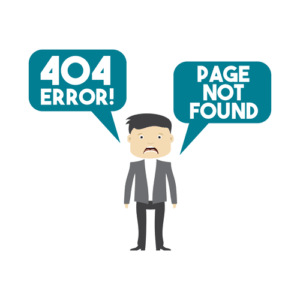Understanding the context behind its use is crucial for effective communication, particularly in relationships where tone and sentiment can shape the interpretation. In Alabama, Klan members advocated better public schools, effective Prohibition enforcement, expanded road construction, and other political measures to benefit lower-class white people. By 1925, the Klan was a political force in the state, as leaders such as J. He pushed for increased education funding, better public health, new highway construction, and pro-labor legislation. Because the Alabama state legislature refused to redistrict until 1972, and then under court order, the Klan was unable to break the planters’ and rural areas’ hold on legislative power. In 1915, the film The Birth of a Nation was released, mythologizing and glorifying the first Klan and its endeavors.
Sometimes you get it because you’re just too tired to care. Other times, it’s because your friend is really busy or, honestly, just doesn’t feel like getting into a long chat. Maybe your friend is swamped with work or mid-Netflix binge, and they don’t have time to craft a long, thoughtful response.
The use of “K” in texting can vary significantly based on context, tone, and the relationship between the parties involved. While it aims for efficiency, its simplicity can lead to misunderstandings, demonstrating that even the briefest communications require careful consideration. As texting continues to evolve, understanding how and why we use abbreviations will remain essential for effective communication.
Blood Drop Cross
Notably, the interpretation of “k” can vary across cultures and age groups. In some cultures, an affirmative response is expected to be polite, and a stark “k” might be perceived as rude or dismissive. When someone says “k,” the interpretation is dependent on the context.
Many groups and leaders, including prominent Protestant ministers such as Reinhold Niebuhr in Detroit, spoke out against the Klan, gaining national attention. Opposing groups worked to penetrate the Klan’s secrecy. After one civic group in Indiana began to publish Klan membership lists, there was a rapid decline in the number of Klan members. The National Association for the Advancement of Colored People (NAACP) launched public education campaigns in order to inform people about Klan activities and lobbied in Congress against Klan abuses.
However, it can sometimes be interpreted as lacking enthusiasm. It is important to consider the context and your relationship with the person you’re communicating with before using “K” as a response. It is an abbreviation for “OK” or “Okay” and is commonly used to indicate acceptance, agreement, approval, or acknowledgment in text messages and online conversations. Additionally, in the context of football and fantasy football, “K” is an abbreviation for kicker, which refers to the position responsible for kicking field goals. In some cases, “K” can also represent a virtual kiss when used in a text message.
In the business world, professionals often use “K” to streamline communication and save time when discussing monetary amounts. Former Confederate brigadier general George Gordon developed the Prescript, which espoused white supremacist belief. Each iteration of the Klan is defined by non-overlapping time periods, comprising local chapters with little or no central direction. Let’s be honest, texting is a whole language of its own. If you’ve ever found yourself staring at a single-letter reply like “K” and wondering if you just accidentally offended someone, you’re not alone. “K” is one of those seemingly innocent, but sometimes strangely loaded, responses that can leave you questioning everything like, “Wait, does this person actually hate me now?
Costumes and the burning cross
In an interview with Vox about whether the internet is destroying language (it’s not), linguist Gretchen McCulloch says that generational differences can impact the ways we send and interpret texts. Giving some advice to a friend but don’t want to be held accountable if they take it and fuck up their life even more? Slap a “but idk” at the end of that sentence, a signal that they should take your words of wisdom with a grain of salt.
–1960s: post-war opposition to civil rights
- But communicating via text is also a dialect that’s still — relatively — in its infancy, which can lead to a lot of confusion and misunderstanding.
- In summary, while the letter “k” may seem like a benign part of everyday conversation, its implications can be quite deep and varied.
- Generally, it implies “OK” in conversations or texting.
- We’ve all been there getting that “K” and wondering if we’ve ruined a friendship or started a texting war.
The slang phrase “K” means ‘okay’ or ‘alright.’ It is commonly used in text messages or online conversations as a shorthand way of expressing agreement or acceptance. In today’s digital communication landscape, abbreviations and slang are a fundamental part of how we interact with one another. One such abbreviation that frequently surfaces in text messages is the letter “K.” But what does it really mean? This article aims to unravel the implications and usages of “K” in texting, exploring its various meanings and contexts. According to a survey conducted by ABC Research, text messaging remains a popular form of communication, with over 80% of smartphone users sending text messages daily.
What Does ‘K’ Mean?
The word/phrase “K” is not a derived word and does not have a specific origin. It is simply a shortened version of the abbreviation “OK” (which means “Okay”). It is commonly used in text messages and online conversations to indicate acceptance, agreement, approval, or acknowledgment. While it may seem like just a letter with no meaning when used by itself, sending “K” in a text actually conveys a specific message.
Either way, we’re all in this texting world together. We’ve all been there getting that “K” and wondering if we’ve ruined a friendship or started a texting war. Think of it like the texting version of an eye-roll or a sigh.
- It is often used by people who are in a particular group or subculture, and it can be difficult for outsiders to understand.
- The KKK of the 1920s had a nationwide membership in the millions and reflected a cross-section of the native born white Protestant population.
- When a guy uses the abbreviation “k,” it generally has the same meaning as when anyone else uses it.
- ” when your friend tells you about an exciting event they have coming up.
- Think of it like the texting version of an eye-roll or a sigh.
What does K mean on FB?
Overall, guys use “k” similarly to everyone else, but it’s always helpful to consider the specific context and relationship dynamics when interpreting its meaning. So next time a guy responds with just a “k,” don’t worry too much about it! He’s probably just saying “okay” and doesn’t mean anything negative by it.
In 1923 he had led the states under his control in order to break away from the national KKK organization. The Ku Klux Klan (/ˌkuː klʌks ˈklæn, ˌkjuː-/),e commonly shortened to KKK or Klan, is an American Protestant-led Christian extremist, white supremacist, far-right hate group. It was founded in 1865 during Reconstruction in the devastated South.
After its peak in 1925, Klan membership in most areas began to decline rapidly.105specify Specific events contributed to the Klan’s decline as well. In Indiana, the scandal surrounding the 1925 murder trial of Grand Dragon D. C. Stephenson destroyed the image of the KKK as upholders of law and order. By 1926 the Klan was “crippled and discredited”.137 D. C. Stephenson was the grand dragon of Indiana and 22 northern states.
Why Does “K” Sometimes Feel Cold?
In very informal conversations, you can hear people say “G” when referring to a thousand dollars. This case study highlights the age-related divide in texting culture and the importance of context in understanding digital language. Therefore, being sensitive to the recipient’s age and texting habits can facilitate better communication. Fun side note – The word “grand” originally referred to $1,000 as well. So next time you hear someone say “50 grand”, you can nod along knowingly while silently translating it to $50K.
So if we stay consistent with the Greek abbreviations, then billion would be shown as a letter G (Giga). Think of your what does k mean computer expressing bytes of memory as kilobyte, megabyte or gigabyte. When drafting a contract, it’s important to avoid abbreviations like “K” for thousands; instead, use the complete number for clarity. This guideline also applies when specifying monetary amounts to be transferred, ensuring precision and avoiding any potential misunderstandings. The letter “K” symbolizes “1000” because it derives from the term “kilo,” which in mathematical terms represents one thousand.
For example, if someone asks if you’re ready to go, you can simply respond with “K” to confirm. Slang is a type of language that consists of informal words and phrases. It is often used by people who are in a particular group or subculture, and it can be difficult for outsiders to understand. Slang is often used to communicate something that is not necessarily literal, and it can be used to make jokes or to express feelings. Overall, using the letter “K” in conversation is a great way to add some humor and show agreement or confirmation without having to type out full sentences. James is a seasoned writer with 5 years of experience exploring the world of slang and informal language.







